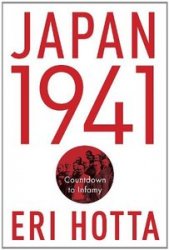
MALAYAN
Mindanao. The most southerly and second largest of the Philippine islands, Mindanao was invaded by Japanese forces on December 20
1941. Landing at Davao on the southeast coast, they were resisted by Philippine units under the command of Brig Gen Sharp. They were unable to stem the Japanese advance and withdrew to the interior of the island where they prepared to continue the struggle as a guerrilla force. However, on May 6 1942, Lt Gen Wainwright ordered the surrender of all American and Philippine troops on the islands. Mindanao remained under Japanese occupation, albeit with strong guerrilla resistance, until the spring of 1945 when the Eighth US Army launched an invasion. On April 17 the 24th and 31st Divisions of Maj Gen Sibert’s XX Corps landed at Illana Bay on the west of the island and pushing eastwards, on May 2 captured the vital town of Davao. This split the bottom half of Mindanao in two and offered an ideal base from which to continue the campaign. But the Japanese Thirty-fifth Army resolutely maintained its resistance and fresh landings in the north, south and east were needed. But by the end of July, remaining Japanese units could be dealt with by Philippine guerrillas or local US forces. MS.
Mindoro see luzon campaign.
Minelayer. Vessel built or converted to lay mines. Many cruisers and destroyers could be converted for the purpose. Special mines could be laid from submarine torpedo tubes; there were also purpose-built submarine minelayers and aircraft were sometimes used as minelayers.
Mines, land. Defensive weapons, often hidden, designed to blow up tanks, vehicles or personnel.
Mines (sea). Underwater explosive devices, moored, bottom-laid or drifting. Divided into “contact” or “influence” (magnetic, acoustic, pressure) mines according to method of causing explosion.
Minesweeper. Vessel used to clear passage through minefields; it may be a converted fishing craft or tug or purpose-built, using cutting sweep or special electrical or acoustic gear to break mines from moorings or set them off. The “Minehunter” was developed after 1945 to locate bottom mines with sonar, then destroy them using divers or remote-control devices. Magnetic mines caused development of non-magnetic (wooden or fibreglass) sweepers for inshore work.
Minsk. The capital of Soviet Be-lorussia, Minsk lay directly in the path of German Army Group Centre’s advance on Moscow during Operation “Barbarossa”. Soviet commander. Col Gen Pavlov, stood little chance with shortages of weapons, ammunition and equipment. On June 26 1941 a German artillery bombardment added to the destruction already meted out by the Luftwaffe. On the 28th Guderian and Hoth’s panzers completed the encirclement of the city, trapping over 287,000 prisoners who constituted the remnants of four Soviet armies. Minsk remained in German hands until July 1944 when the Red Army made a rapid and comprehensive encirclement of the city. The recently appointed German commander, Model, was unable to extricate most of his Fourth Army and, on July 3, Chernyakovsky’s Third Belorussian Front advanced into the city from the north while elements of the First Belorussian Front entered from the south. Over
100,000 German troops were trapped in a pocket to the east of Minsk, where more than 40,000 were killed trying to break out. Whole areas of Minsk had been blown up by the retreating German forces and under Nazi rule the civilian population had decreased by 259f in three years. MS.
Minuteman missile. America’s most numerous icbm deployed in three versions since 1962; 1,000 were in service by 1967. Minute-man is a solid-fuel missile deployed in silos. Minuteman 1 and 2 carried single warheads each of 1-2 megatons; 450 Minuteman 2s remain in service. Minuteman 3, introduced in 1970, has MiRved warheads, either three 170 kiloton or, from 1980, three 335 kiloton; 227 of the former and 300 of the latter are currently on alert.
Min Yuen
EMERGENCY.
Mirage III, Dassault (French). Single-seat all-weather interceptor fighter/strike aircraft. Prototype flew November 18 1956; first production Mirage IIIC, October 9 1960; Mirage HIE multi-role development, April 5 1961. Israel acquired 72 Mirage IIICs; Pakistan air force operated Mirage IIIEPs and IIIRPs against India, December 1971. Australia bought 100 Mirage IIIOs, South Africa 16 Mirage IIICZ. Mirage IIIC has one 9,3701b (4,250kg) s. t. SNECMA Atar 9B3 engine; max. speed l,386mph (2,230kph); two 30mm cannon.
Mississippi. US battleship. New Mexico class. Completed 1918. Moved from Atlantic to Pacific after Pearl Harbor; took part in most of the landings and fought at Surigao Strait. After the war, a weapons trial ship, the first to fire anti-aircraft missiles (1952).
Missouri. US battleship. Iowa class. Last American battleship completed (1944) - bombarded Iwo Jima and Okinawa. Japanese surrender signed on board. Now back in active service.
Mitchell see B-25 mitchell.
Mitchell, Maj-Gen William (“Billy”) (1879-1936). US. A professional soldier who learnt to fly in 1915 and in 1918 commanded substantial air forces in France. He became convinced of the future importance of air power and advocated the creation of an independent air force in the US. He organized demonstrations of how warships could be sunk by air attack and popularized his views in a series of sensational publicity campaigns. In 1925 he was court-martialled for insubordination and resigned his commission. ANF.
Mitla Pass. One of several defiles on the routes across the Sinai Desert where fierce fighting took place in 1967 and 1973. See also
ARAB-ISRAELl WARS.
Mitscher, Adm Marc Andrew
(1887-1947). US. One of the first US naval officers to qualify as a pilot, following graduation from




 World History
World History









